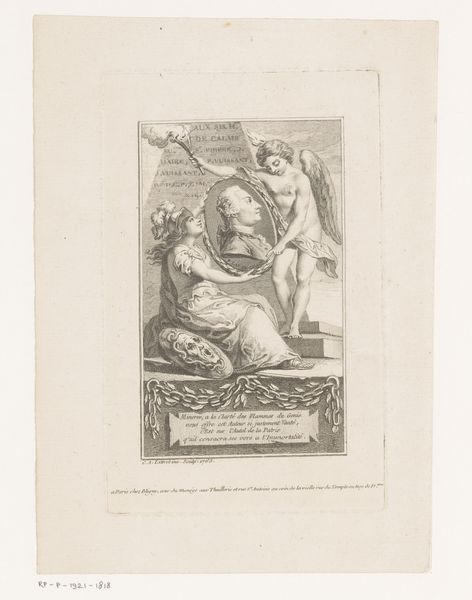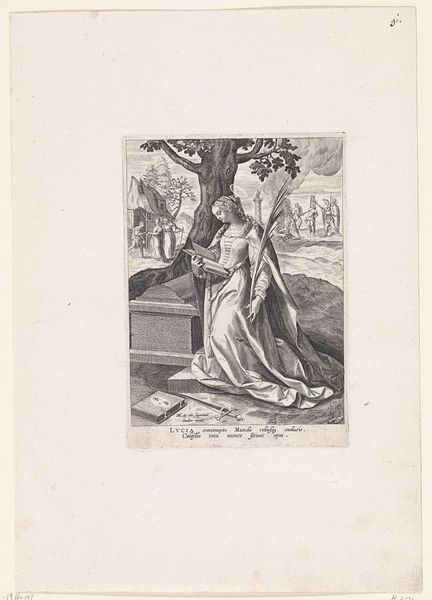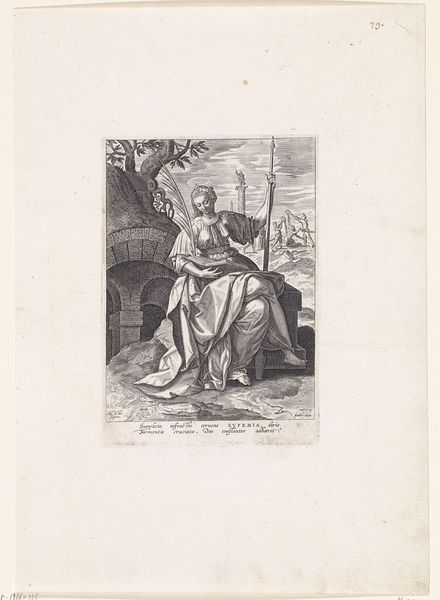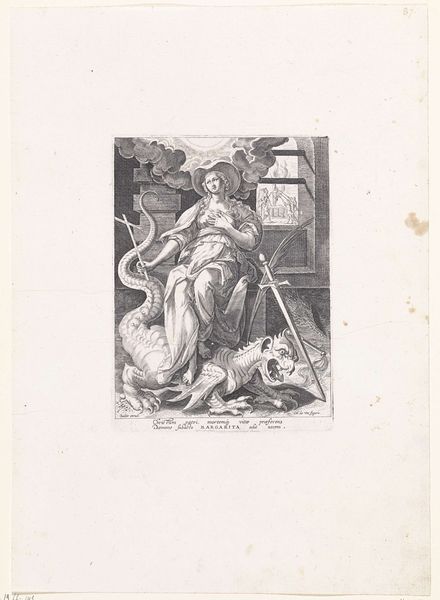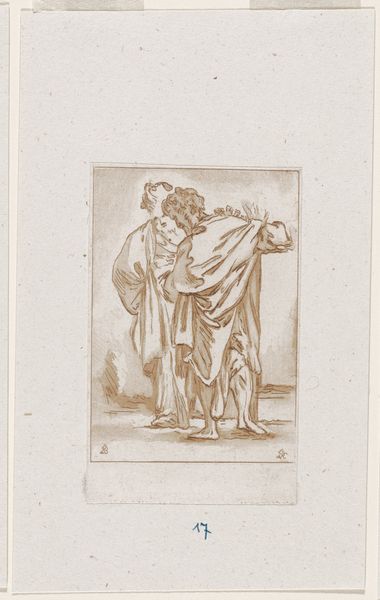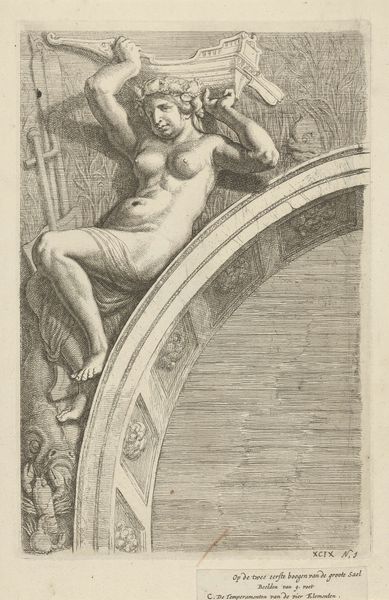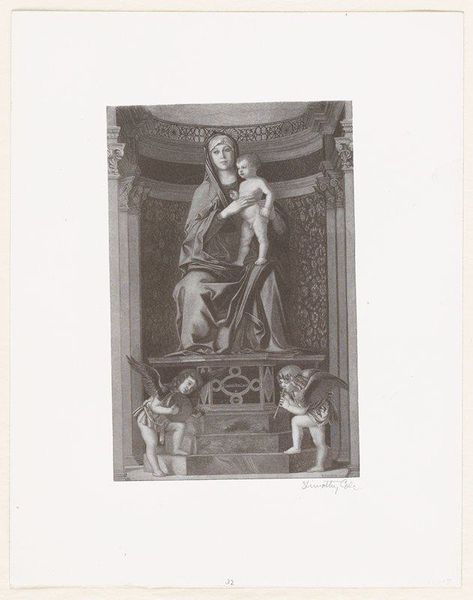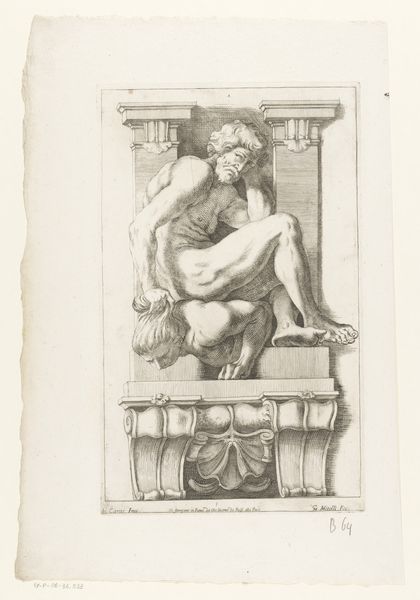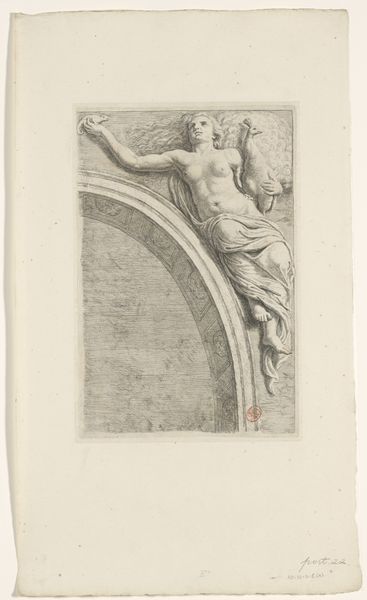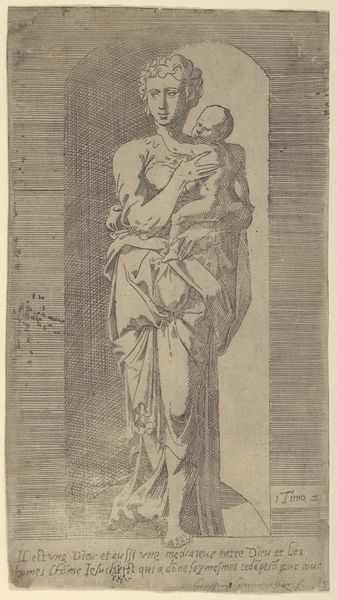
Dimensions: height 190 mm, width 134 mm
Copyright: Rijks Museum: Open Domain
This is Johann Sadeler’s “Heilige Anastasia,” made around 1600 using engraving techniques. The process begins with a metal plate, usually copper, into which the design is carefully incised with a tool called a burin. Look closely and you will see how Sadeler has created depth and shadow through a dense network of fine lines. These lines are not casually drawn. Each one demanded decisive action from the engraver, a commitment of time and effort. The image builds up gradually, with layer upon layer of cross-hatching to achieve darker tones. The linear quality, stark contrast, and precise detail all owe to the material properties of the metal plate. This was no quick sketch, but a labor-intensive undertaking that testifies to the engraver’s skill. Such prints were a staple of early modern visual culture, and the product of intense collaboration between artists, publishers, and distributors. Appreciating the immense work involved in its production helps us look beyond the image and understand the historical context of its making.
Comments
No comments
Be the first to comment and join the conversation on the ultimate creative platform.
